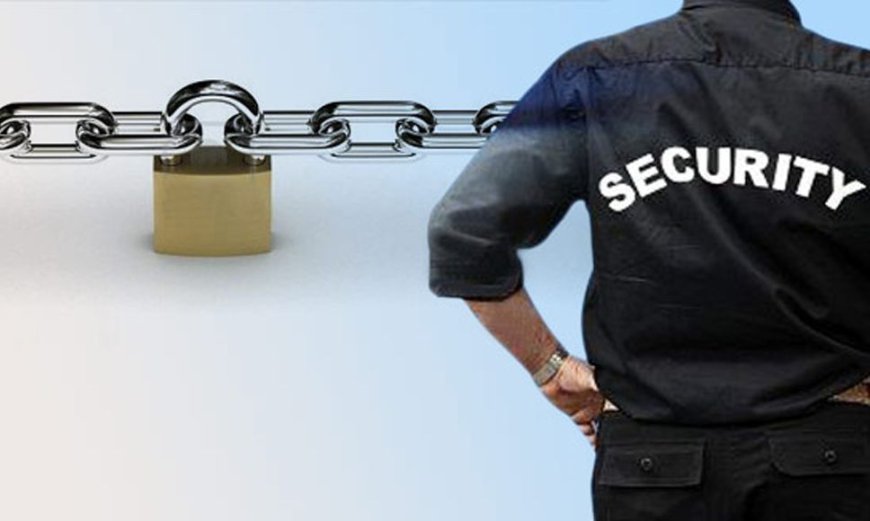Retail Security Policies: Developing a Comprehensive Plan
Retail Security

In today's retail environment, security is a critical concern for businesses of all sizes. Effective retail security policies are essential for protecting assets, ensuring the safety of employees and customers, and maintaining a positive shopping experience. Developing a comprehensive retail security plan involves several key components, including risk assessment, technology integration, employee training, and continuous evaluation. This article provides a detailed guide on how to create and implement robust retail security policies.
1. Conducting a Risk Assessment
The first step in developing a comprehensive retail security plan is to conduct a thorough risk assessment. This process involves identifying potential security threats and vulnerabilities within the retail environment.
Key Steps:
-
Evaluate Physical Security: Assess the store layout, including entry and exit points, blind spots, and areas with high-value merchandise.
-
Analyze Historical Data: Review past incidents of theft, vandalism, or other security breaches to identify patterns and common threats.
-
Consider External Factors: Take into account the surrounding neighborhood, local crime rates, and any external factors that could impact security.
2. Setting Clear Security Objectives
Once the risks have been identified, the next step is to set clear security objectives. These objectives should align with the overall business goals and address the specific security needs identified in the risk assessment.
Key Objectives:
-
Prevent Theft and Fraud: Implement measures to deter shoplifting, employee theft, and fraudulent transactions.
-
Ensure Safety: Create a safe environment for employees and customers, reducing the risk of accidents and violence.
-
Protect Assets: Safeguard high-value merchandise, cash, and other assets from theft and damage.
-
Maintain Compliance: Ensure that security policies comply with relevant laws and regulations.
3. Developing Security Policies and Procedures
Security policies and procedures form the backbone of a comprehensive retail security plan. These policies should be detailed, clearly written, and easily accessible to all employees.
Key Policies:
-
Access Control: Define who has access to different areas of the store and how access is granted and monitored.
-
Surveillance: Outline the use of security cameras, including placement, monitoring, and data storage.
-
Inventory Management: Establish procedures for tracking inventory, conducting regular audits, and reporting discrepancies.
-
Cash Handling: Implement strict protocols for handling cash, including regular deposits, cash limits, and secure storage.
4. Integrating Technology
Modern technology plays a crucial role in retail security. Integrating advanced security systems can enhance the effectiveness of security policies and provide real-time protection against threats.
Key Technologies:
-
Surveillance Cameras: High-definition cameras with features like facial recognition and behavior analysis.
-
Alarm Systems: Intrusion alarms, glass break sensors, and motion detectors to alert security personnel of unauthorized access.
-
Access Control Systems: Biometric scanners, RFID cards, and mobile access solutions to manage entry to secure areas.
-
Point of Sale (POS) Security: Encryption and tokenization to protect transaction data and prevent fraud.
5. Training Employees
Employee training is essential for the successful implementation of retail security policies. All employees should be trained on security protocols, how to identify and respond to security threats, and the importance of maintaining a secure environment.
Key Training Areas:
-
Theft Prevention: Techniques for identifying and preventing shoplifting and employee theft.
-
Emergency Procedures: Protocols for responding to emergencies such as fires, natural disasters, and violent incidents.
-
Customer Service: Encouraging employees to engage with customers in a way that deters potential thieves.
-
Cybersecurity: Educating employees on best practices for protecting sensitive information and preventing cyber threats.
6. Creating a Security Culture
Developing a security-conscious culture within the retail environment is crucial. This involves fostering a sense of shared responsibility for security among all employees and encouraging proactive behavior.
Key Strategies:
-
Leadership Commitment: Ensure that management demonstrates a strong commitment to security and leads by example.
-
Regular Communication: Keep security top-of-mind through regular meetings, updates, and reminders.
-
Recognition and Rewards: Acknowledge and reward employees who demonstrate exceptional security awareness and behavior.
7. Continuous Monitoring and Evaluation
Security is not a one-time effort but an ongoing process. Continuous monitoring and regular evaluation of security policies and procedures are essential to identify areas for improvement and adapt to changing threats.
Key Activities:
-
Regular Audits: Conduct regular security audits to assess the effectiveness of policies and identify gaps.
-
Incident Reporting: Implement a system for reporting and tracking security incidents to monitor trends and inform policy updates.
-
Feedback Mechanisms: Encourage employees to provide feedback on security policies and suggest improvements.
8. Collaborating with External Partners
Collaborating with external partners, such as security firms, law enforcement, and industry organizations, can enhance retail security efforts.
Key Partnerships:
-
Security Consultants: Engage security experts to conduct assessments, provide recommendations, and assist with policy development.
-
Law Enforcement: Establish a relationship with local law enforcement to enhance response times and gain insights into local crime trends.
-
Industry Groups: Participate in industry groups and networks to stay informed about emerging threats and best practices.
9. Ensuring Legal Compliance
Retail security policies must comply with relevant laws and regulations. This includes data protection laws, health and safety regulations, and labor laws.
Key Considerations:
-
Privacy Laws: Ensure that surveillance and data collection practices comply with privacy regulations.
-
Health and Safety: Implement measures to protect employees and customers from hazards.
-
Employment Laws: Ensure that security policies do not violate employee rights and are applied fairly.
Conclusion
Developing a comprehensive retail security plan requires a multifaceted approach that addresses physical security, technology integration, employee training, and continuous evaluation. By conducting a thorough risk assessment, setting clear security objectives, and implementing detailed policies and procedures, retailers can create a secure environment that protects assets, ensures the safety of employees and customers, and maintains a positive shopping experience. Embracing modern technology, fostering a security-conscious culture, and collaborating with external partners further enhance the effectiveness of retail security efforts. Through ongoing monitoring and adaptation, retailers can stay ahead of emerging threats and ensure long-term security success.
What's Your Reaction?






















